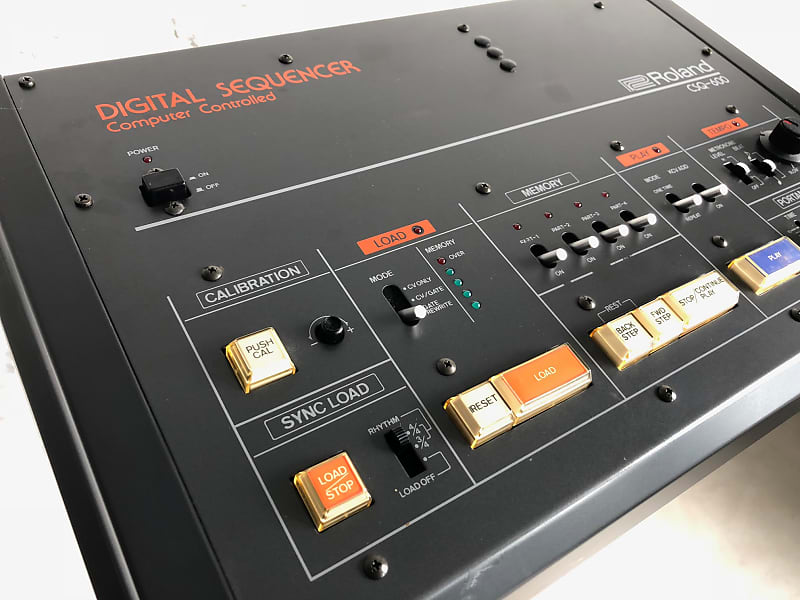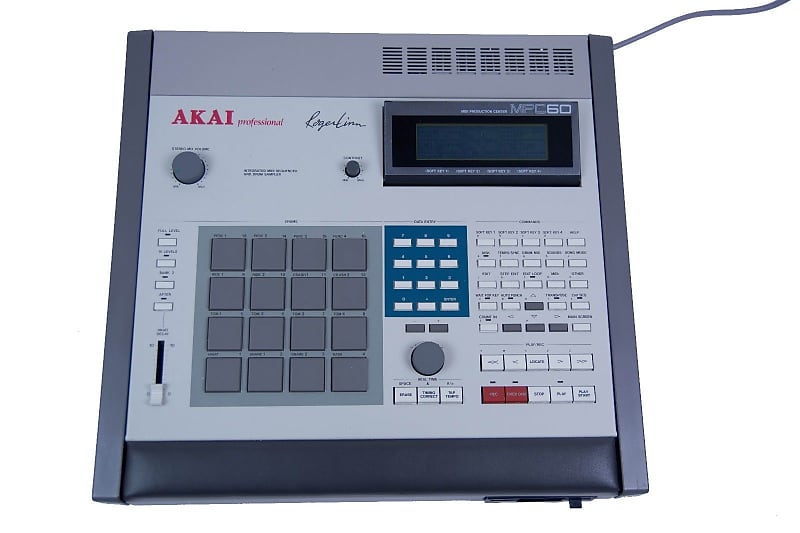Time marches on, and with it comes technological progress. This is especially true of music technology, and while some old styles do occasionally come back into vogue (hello, analog synthesis), by and large, the front window displays of the music shops of yesterday are today's thrift store finds. This is particularly true of hardware sequencers.
Ubiquitous in the 1980s and '90s, by the early 2000s they had been largely superseded by the computer, with musicians preferring the ease and convenience of firing up a DAW to spending hours hunched over a glorified calculator, punching in esoteric number sequences just to make a basic musical pattern.
We kid, of course. Those hapless hardware sequencers of yesteryear still have quite a lot to offer, and with the resurgence of hardware many producers are looking to get back out of the box and go DAWless. These hardware sequencers are also, for the most part, very affordable, almost surprisingly so given their pedigree in music production.
In this article we'll look at five hardware sequencers worth revisiting, who's used them, and how to get the most out of them. But first, let's address the elephant in the room: Why use hardware sequencers at all?
Why Hardware Sequencers?
You're probably reading this on your computer, which likely has an extremely powerful DAW in it. You could even be reading this article on a phone, which is capable of doing everything a hardware sequencer could do, and then some. So why go backwards in time and use some tech that became obsolete decades ago?
First of all, it's worth it precisely because it's not a computer or phone. If you're like most people in the world now, you spend quite a bit of your waking life staring at a screen. Hardware sequencers were made in the days before large screens became the norm, and so were made with other workflows in mind. There may be a small LCD screen somewhere toward the top of the front panel but really, you'll be working with buttons to program your music. Learn the workflow and this will become second nature, freeing your mind to focus on music-making, rather than take in visual information. Plus it can't run Facebook, so that's one less distraction.
Hardware sequencers were all unique. In the late '80s, most every synthesizer manufacturer had its own sequencer, with its own proprietary workflow. While some were better than others, they were all different. And no matter which one you choose now, it's going to be very different from inputting note information into a DAW. The upside of this is by learning a unique workflow, you'll be creating new neural pathways in your brain and be able to think about composing music in a different way. You may very well find yourself writing passages and melodies that would have never occurred to you when sitting in front of a computer.
Aside from the benefits of getting away from a computer, there are many pluses to working with hardware sequencers. Many are famous for their timing, whether they be rock-solid or, as with the Akai MPC series, have a coveted swing. As many old sequencers were limited in memory and function, users stumbled on tricks to extend their usefulness through experimentation. In these days of endless music-making options, having some limitations in place can be paradoxically freeing for your creativity. Lastly, some were not limited to sequencing, and had built-in sounds or other functionality worth exploring.
Enough of the hard-sell. Let's look at five sequencers that we think deserve to be rescued from the scrap heap.

Released in 1986 and sharing a similar visual aesthetic with the DDD-1 drum machine, Korg's SQD-1 MIDI Recorder is a two-track sequencer that did a lot for the money at the time. Like many other sequencers, the SQD-1 has some basic editing functions and can record in real- or step-time. Although the SQD-1 has 16-note polyphony and can support 15,000 MIDI events, it's limited to only two tracks.
The way to get around this is to bounce tracks down to the sub track and merge them. Of course, once merged, they can't be unmerged, so you'd better be committed to what you're bouncing. The SQD-1 was famously used by Derrick May and Juan Atkins, and if it's good enough for those guys, it's certainly good enough for you.
The SQD-1 goes for around $100 these days, but you'll likely want to pony up for a USB drive upgrade for the quick disk floppy drive. If you're not familiar with quick disks, they were a 3.5" floppy alternative that didn't catch on in a big way. Because of this, quick disks are relatively expensive, and the drives are prone to failure. Gotek makes a USB floppy emulator, and, with the right firmware and a little technical know-how, you might be able to get it to work with your SQD-1.

Not long after Korg released the SQD-1, American upstart Alesis surprised everyone in 1987 with the MMT-8, a fairly powerful multitrack sequencer housed in a unique gray wedge (well, it was the '80s after all). With eight tracks, each capable of handling 16 channels of MIDI, and controls that resembled a tape transport, it was almost (almost!) a DAW in a box. You could even punch in edits as with multitrack tape. And, thanks to the nice-feeling rubber pads on the front, programming was a breeze, and you could mute and unmute tracks on the fly, making it a nice performance piece of kit too (Orbital famously toured with three of them at one point).
The MMT-8 was very cheap for the time, and found its way into the hands of many electronic musicians, like the aforementioned Orbital, Moby, and Carl Craig. It matched Alesis' HR-16 drum machine and, together, they looked like mini spaceships or aircraft carriers. The MMT-8 was even released in black to match the HR-16B drum machine.
The MMT-8 is flexible and a lot of fun, and they're still very affordable these days, with most prices settling at around $150. If you do buy one, make sure it has the power adapter included. For this and the HR-16, Alesis used an unconventional 9V AC adapter (not the more common DC), meaning you'll need to track one of these down to get it to work.

Thanks to the rise of Eurorack modular, there's been a renewed interest in all things CV and gate. Roland released a number of CV/gate sequencers in the late '70s and early '80s, including the CSQ-600 in 1980. While some sequencers aim for complexity, this one is fairly simple: Plug in a CV-equipped keyboard, hit record on the CSQ-600, play some notes, and you're done. Easy peasy lemon CV.
Of course, it's a little more involved than that. The 600 can record up to four sequences with a total of 600 notes (hence the name). These can be chained or played simultaneously. Sequences can be recorded live, as mentioned, or via step, the latter of which can be edited. There's no screen at all though, so you'll have to rely completely on your memory and ears. It can clock a TR-808 and sequences can be saved to cassette.
They're simple to use and look dead cool. At around $400 or up, they're not cheap, but we are talking Roland here, and if you happen to have a System-100M series, it's almost a requirement to pair them together.

By the late '90s, the writing was on the wall for the hardware sequencer. Although most electronic musicians had yet to go totally into the box in terms of recording, a number of viable computer sequencing options, such as Notator for the Atari 1040ST, had already come into existence. This didn't stop Yamaha from releasing the QY-700, the last of the great old-school hardware sequencers.
Landing in stores in 1996, it featured buttons like those found on adding machines, a two-octave rubber button keyboard (very handy), and a large LCD screen that displayed more than just text. This behemoth could record up to 110,000 notes, 32 tracks, and 20 songs, and even had its own synthesizer inside. With sounds based on Yamaha's then-current AWM2 synthesis architecture plus general MIDI and even drums, you could use the QY700 as a kind of songwriter's assistant, with plenty of preprogrammed phrases to incorporate into your music.
The downside? It is, by many accounts, difficult to use. That hasn't stopped Squarepusher though, who may be the QY700's most famous user. Used on many of Tom Jenkinson's early songs, the QY700 made a comeback on his most recent album, Be Up A Hello, which saw him embracing earlier technology. If you're looking for a way to get out of the (computer) box, one of these beasts can be had for around $400.

Created by Roger Linn for Akai in 1986, the MPC60—part sampler, part drum machine, part sequencer—is one of those instruments that changed the way music is made. The 4X4 grid of pads was revolutionary for the time, allowing not only for easy drum programming but also for a sound to be arranged chromatically and played like a traditional keyboard. But we're here to talk about sequencers, so let's look at the MPC60's ability to sequence external hardware.
With the ability to hold 60,000 notes, 99 tracks, 99 sequences, and 20 songs, the MPC60 is no sequencer slouch. It's not surprising that it's been the go-to hardware sequencer for quite a few producers across a number of different genres. Each of the 16 pads can be assigned to a different MIDI note for external triggering and control changes. It also has the famous MPC swing, which makes it ideal for beat-heavy genres like hip-hop and house.
With prices hovering around the $2000 mark, it's not likely to be your first choice if all you need is a sequencer. But if you're looking for a sampler/drum machine that can also sequence external gear, the MPC60 is a stone-cold classic that should be at the top of any beatmakers' list. Also look into the MPC60II and MPC3000 for alternatives.
About the author: Adam Douglas is a musician and synthesizer fan based in Tokyo, Japan. He writes about synths on his blog, Boy Meets Synth.
